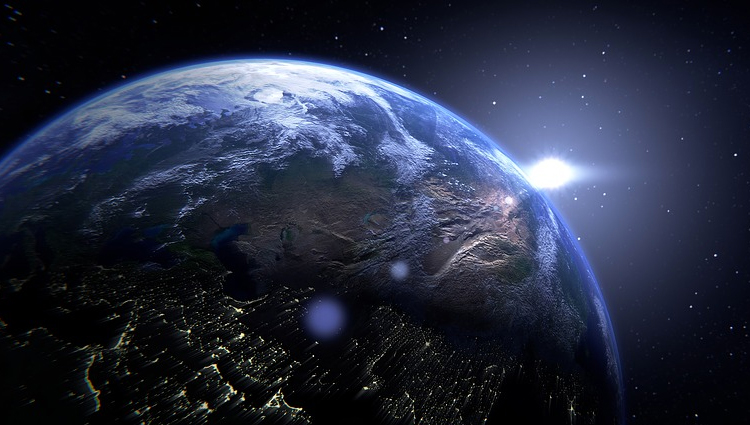Building Unbreakable Codes Beyond The Bounds Of Earth

Pixabay
(ISNS) -- Scientists are pushing to create a space-based quantum communications network that could enable impossible-to-monitor transmissions.
In doing so, they might make it possible for someone named Scotty to really teleport some information into space.
It would be enough "to spook" Albert Einstein, said Thomas Jennewein of the University of Waterloo in Ontario, one of the top researchers in the field.
The encryption research could have immediate practical implications. The process would make use of entangled photons, what Einstein--who resisted the consequences of quantum theory until his death --called "spooky action at a distance."
"If we can use correlations between entangled photons to establish a quantum key, it could be used for secure communications," said Jennewein.
Einstein and two colleagues theorized in 1935 that if you had two quantum systems that interacted, such as two atoms in a molecule, and then separated them, they would remain entangled, meaning their properties would be inextricably linked. Measuring one atom would instantly produce a change in the other no matter how far apart they were.
Einstein believed that there was a universal speed limit: nothing could travel faster than light so he thought such communication—"spooky action"—would be impossible.
But in 1972, a group of U.S. scientists showed that is exactly what happens, at least over the short distances of their laboratory experiment.
Decades before, another physics giant, Werner Heisenberg, proposed in his famous uncertainty principle that merely observing a particle or otherwise disturbing it changes its properties, and--according to quantum theory--so instantly would that of its entangled twin.
Common encryption involves using keys, series of numbers, and letters that code and decode messages. The sender has one key that encrypts the message; the person receiving the message has another which decodes it.
Scientists can envision sending beams of quantum signals from one place to another to produce encryption keys, but there is a problem.
Quantum communications signals have not been able to travel very far on Earth. The current record is 89 miles set in the Canary Islands by Jennewein and a team, then of the University of Vienna. The problem is transmission loss or scattering in the atmosphere.
Even using fiber-optic cables is not the answer, according to Joshua Bienfang, at the National Institute of Standards and Technology, another expert in the field. The chances of a single photon traveling safely more than around 250 miles in a fiber-optic cable is slim, he said.
That's why Jennewein and other researchers are looking to space, where the beams would not scatter in the vacuum. His lab, among others, now has produced a design for such satellites that would test that out.
Jennewein describes a system in which a device in a satellite creates entangled photon pairs and simultaneously transmits one of each pair to two ground stations in beams of millions of photons, all in entangled quantum states. That means both stations should have the same key.
The two stations would compare them. If the transmissions were not intercepted or modified by an eavesdropper, the two keys should be identical. The sender can then send a conventionally encrypted message secure in the knowledge no one is listening.
But, if there is any alteration in the keys, which would happen if anyone intercepted the key message, Heisenberg's theory would strike, and the photons would be altered. The two parties would know if there was an eavesdropper and either resend the keys or try another system.
Several corporations and government research facilities around the world are working on similar satellite systems.
"Moreover, long-distance 'quantum teleportation' experiments could be conducted--the first baby steps towards realizing the famous Star Trek 'Beam me up, Scotty' command may be only a few years away," Jennewein wrote in the magazine "Physics World." In quantum teleportation, actual objects themselves are not beamed up. Instead, their information—encoded in a quantum state—would vanish from a particle on Earth and then reappear in a particle in space.
The scheme would require three photons, Jennewein said. One, the input photon, to be teleported, and two others, entangled and separated.
"The input photon is correlated with one of the entangled ones, and thereby its quantum state is fully transferred onto the other entangled photon, which can be at a distance," Jennewein said. "The final photon is the new 'original,' and the initial photons completely lose their information."
An additional benefit of developing a quantum satellite system is that it would enable physicists to test quantum theory over much greater distances.

